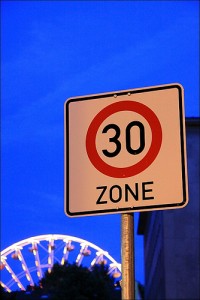Podcast: Play in new window | Download
Subscribe: Apple Podcasts |
 This episode of The Engineering Commons dives into the importance of “soft skills” to engineering professionals.
This episode of The Engineering Commons dives into the importance of “soft skills” to engineering professionals.
Thanks to Nicholas Smale for use of the photo titled “Ghostbusters Piggybank.” Opening music by John Trimble, and concluding theme by Paul Stevenson.
Podcast: Play in new window | Download
Subscribe: Apple Podcasts |
 What is your creative style, and when might it be most effective? We talk about creative diversity with electrical engineer Kathryn Jablokow in this episode of The Engineering Commons podcast.
What is your creative style, and when might it be most effective? We talk about creative diversity with electrical engineer Kathryn Jablokow in this episode of The Engineering Commons podcast.
- Brian finds it best to have multiple solutions ready for every engineering problem he encounters, because potential solutions have a nasty habit of failing to be fully effective.
- Carmen jokes that his preferred problem-solving style would be to pull a “Castanza” and sleep under his desk.
- Our guest is Kathryn Jablokow, an Associate Professor of Mechanical Engineering and Engineering Design at Penn State University. Her teaching and research interests include problem solving, invention, and creativity in science and engineering, as well as robotics and computational dynamics.
- Despite an initial interest in physics, Kathryn transferred her major to electrical engineering so that she could “build things” and programmatically control them.
- As part of her graduate work, our guest help build a giant walking machine, officially known as an “Adaptive Suspension Vehicle.” Do any of our listeners know to which corner of the earth this vehicle has disappeared?
- We decide against describing the mathematical details of three-dimensional rigid body dynamics in a audio podcast; our listeners breathe a sigh of relief!
- Kathryn authored an article titled “Engineering Styles” for the ASME website in March 2011.
- Creative diversity can be described by four key variables: creative level, creative style, motive, and opportunity.
- Creative level describes the potential capacity that one brings to the creative process; this includes raw talent, experiences, education, and practiced skills.
- Creative style describes one’s cognitive preference for either adapting existing structures and methods to new uses, or innovating completely new structures and methods.
- Knowing someone’s creative level tells us nothing about their creative style.
- A well-known model of cognitive style is Kirton’s Adaption-Innovation theory. A normal distribution exists across this continuum, both for the general public and for engineering professionals.
- Our cognitive style remains fairly fixed over time, although we are capable of engaging in creative activities that are either more adaptive or more creative than we like, hence making us “uncomfortable.”
- Neither adaptive creativity or innovative creativity is better than the other; each can be beneficial depending on the problem and situation at hand.
- We perceive those with a differing cognitive style to have a lower cognitive level.
- Motive describes our willingness to stick with a problem until it is solved, and each of us is motivated by a different set of intrinsic and extrinsic factors.
- Opportunity describes whether or not we perceive the conditions around us as being amenable to creative solutions.
- Technical managers may have to overcome both “person-person” and “person-problem” gaps.
- We debate whether companies and managers really want “creative thinkers.”
- Inventive problem-solving techniques such as TRIZ and SIT can lead to new solutions, regardless of one’s creative style.
- Kathryn recently helped teach a massively open online course (MOOC) titled “Creativity, Innovation, and Change.”
- Our guest co-authored an academic paper( pdf) that examined concept maps drawn by engineering students with creative styles ranging across the Adaption-Innovation scale.
- Kathryn can be found on LinkedIn. She can also be reached via email: kwl3 -=+ at +=- psu.edu.
Thanks to JohnathanMcCabe for use of the image titled “20141129_i.” Podcast theme music by Paul Stevenson.
Podcast: Play in new window | Download
Subscribe: Apple Podcasts |
 What is it like for an engineer to be “in the zone?” Are there any good techniques for finding such a “flow” in your engineering work? We discuss these issues in this week’s episode.
What is it like for an engineer to be “in the zone?” Are there any good techniques for finding such a “flow” in your engineering work? We discuss these issues in this week’s episode.
- Chris likes the performance of leaded solder, but recognizes the importance of moving to a lead-free alternative. This transition in solder composition was largely driven by the Restriction of Hazardous Substances Directive (or RoHS).
- The problem of tin whiskers has the aerospace industry continuing to use leaded solder.
- Chris has slipped “into the zone” while soldering, and Jeff has similarly found the “flow” while working on CAD drawings.
- Time seems to fly by when one is in the zone, and the process can be both physically and mentally exhausting.
- Psychologist Mihály Csíkszentmihályi has theorized that moments of flow occur when we activate so many neurological functions that we can no longer maintain awareness of our own activities. Thus, we lose any sense of self, and become wholly engrossed in the moment.
- A blog entry about creative flow, written by Everett Bogue, was recently published on the site Zen Habits. It is noted that achieving flow can be difficult.
- Suggested steps for achieving flow are:
- Pick a enjoyable, challenging activity
- Eliminate distractions
- Think before you do
- Isolate yourself
- Let go
- Give yourself a time limit
- Keep moving
- Don’t think
- Practice
- Gamification uses game design techniques to enhance non-game contexts.
- In a recent YouTube clip, Slovenian philosopher Slavoj Žižek claims that happiness is rarely a driving desire in creative endeavors.
- The topic of what inspires people to take action is covered in Daniel Pink’s book, Drive: The Surprising Truth About What Motivates Us.
- We learn that Jeff will listen to (yawn) smooth jazz while working. Chris, on the other hand, can crank away while listening to techno music.
- Clips of white, pink, or brown noise can be found online at SimplyNoise.com. These are useful for drowning out unwanted background noise in the work environment.
- John Cook claims that Mental Context Switches are Evil. It’s tough to stay in the zone if you’re constantly having to think about the tools you are using, and the context in which they work.
- Both Chris and Jeff have experimented with the Pomodoro technique, in which tasks are broken into 20 minute work sessions. Numerous apps are available for tracking tasks and interruptions, if you don’t like using pencil and paper.
- Cubicles were created for office equipment manufacturer Herman Miller by designer Robert Propst.
- Jeff’s additional suggestions for getting into the zone include:
- Start with a clean desk
- Use sketches to capture relationships
- Leave a foothold for the next day
- Take a power nap when struggling
- Some companies provide napping rooms for employees to refresh themselves mid-day.
- Today’s engineers have to maintain a creative edge, as routine functions and duties can be computerized or outsourced.
Thanks again to Ian for being on The Engineering Commons this week. To catch each update as soon as it’s posted, be sure to subscribe to the feed!
Thanks to loop_oh for the speed zone photo, titled “30 zone.”
Practical insights for the engineering crowd
 This episode of The Engineering Commons dives into the importance of “soft skills” to engineering professionals.
This episode of The Engineering Commons dives into the importance of “soft skills” to engineering professionals.
